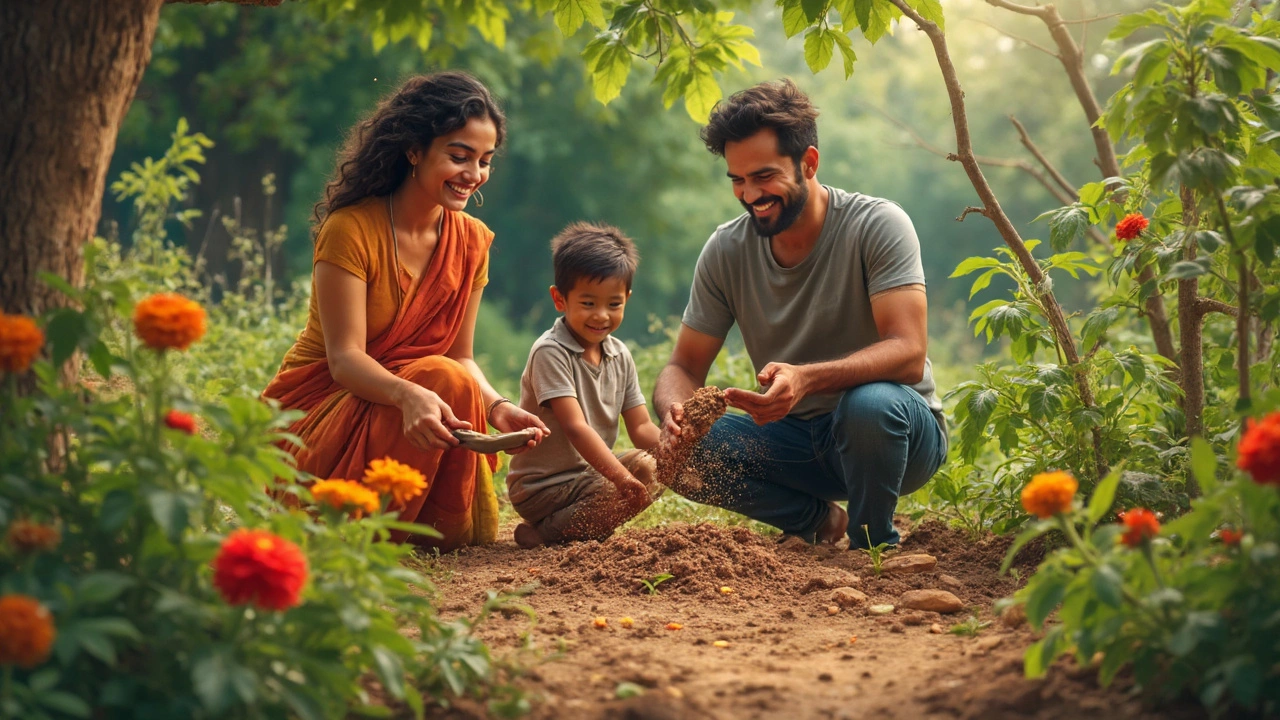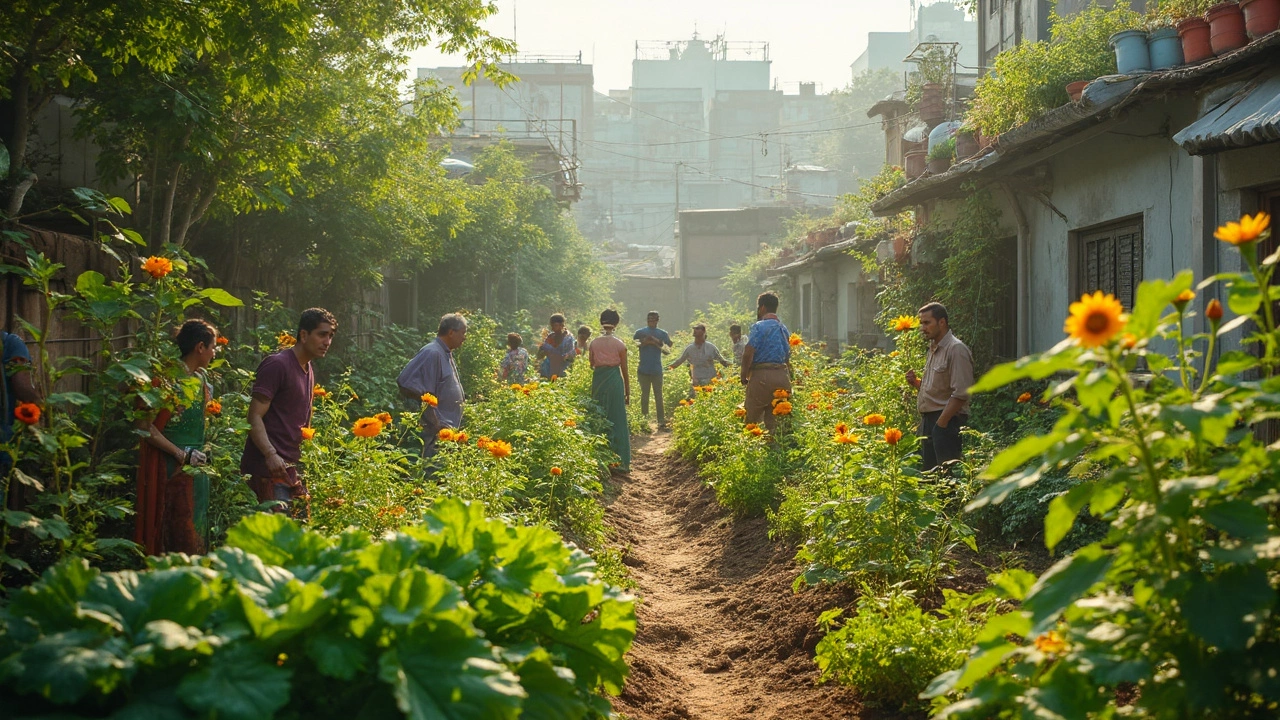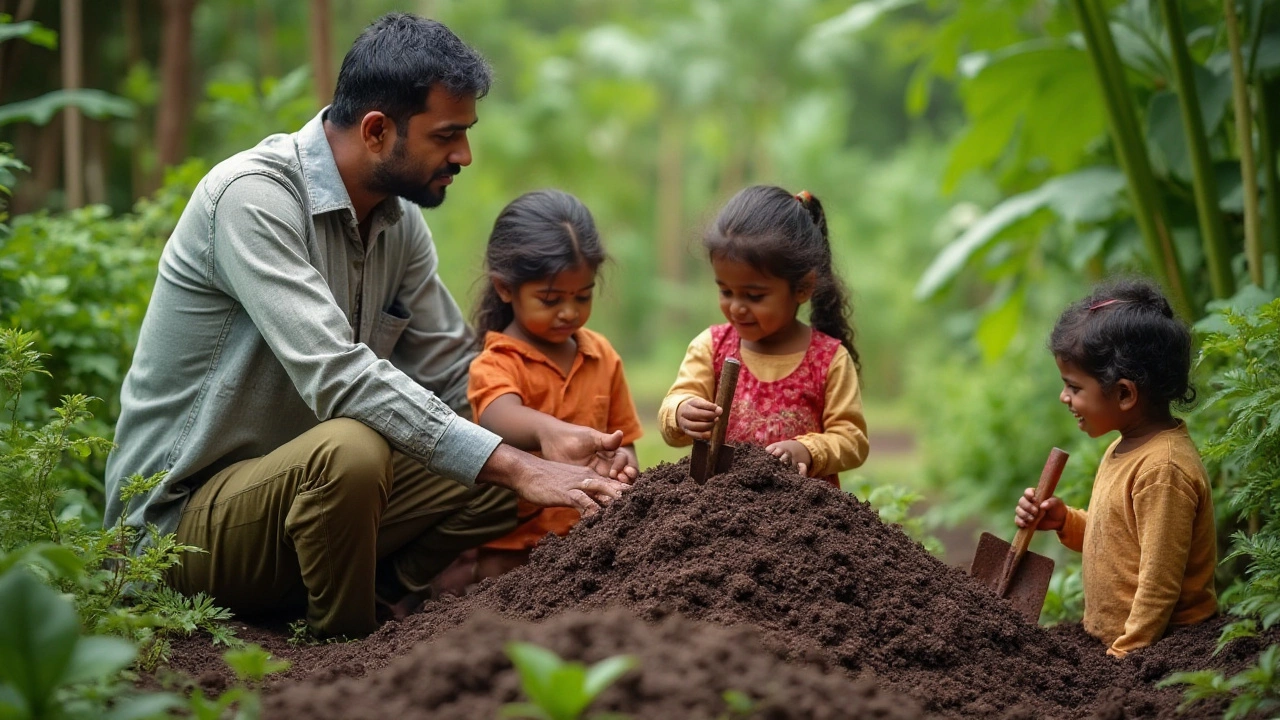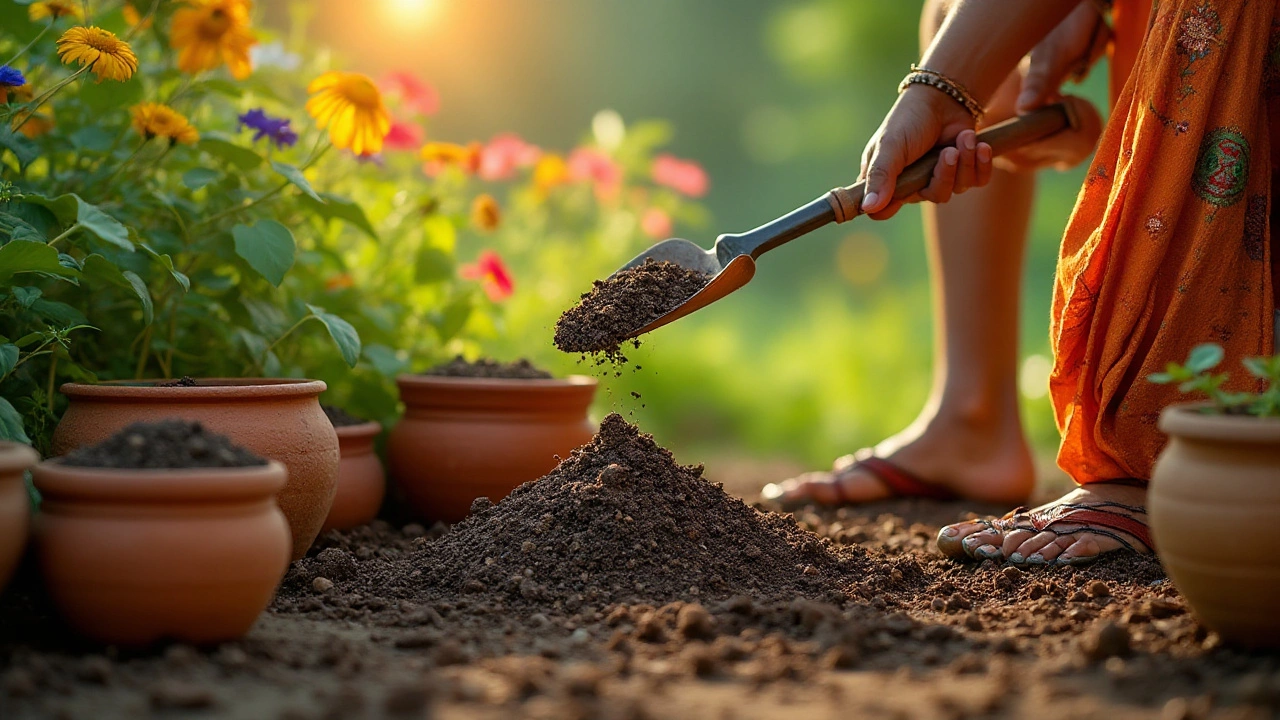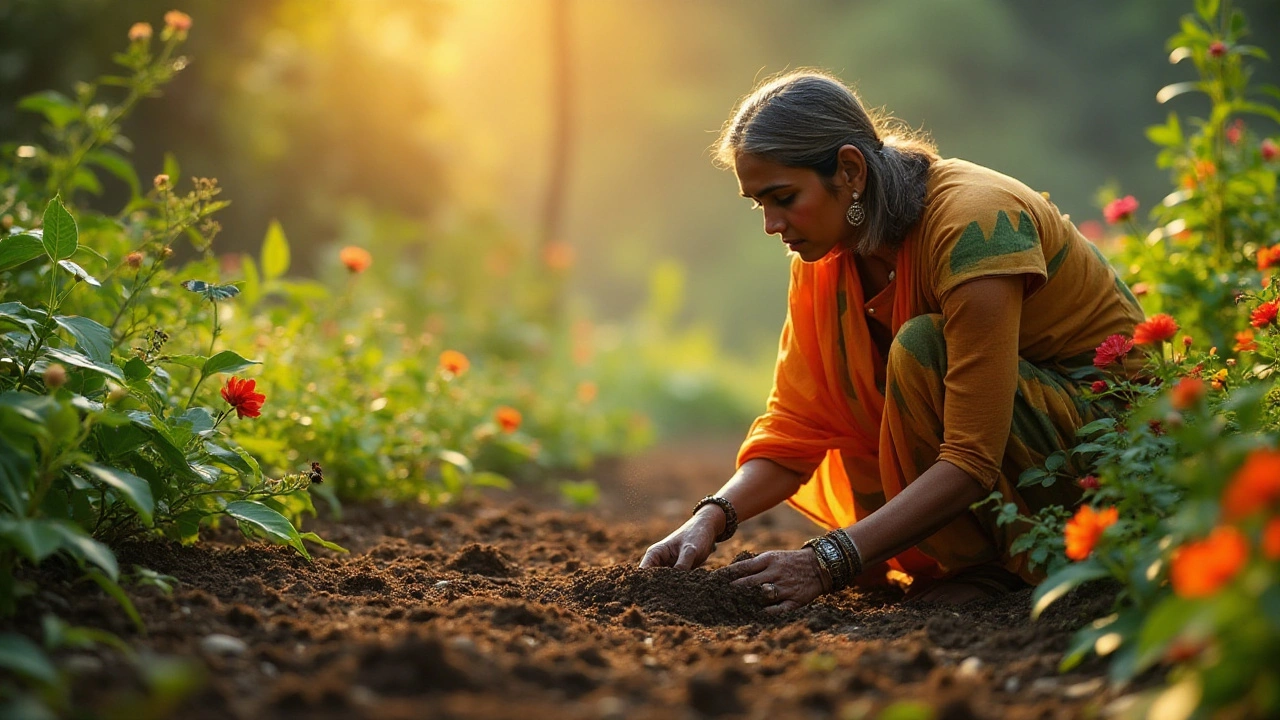Soil Health: Simple Ways to Boost Your Garden Soil
Good soil is the foundation of a thriving garden, but many gardeners overlook it until plants start struggling. The great news is that fixing soil problems doesn’t need fancy chemicals or expensive equipment – just a few easy steps and the right habits.
Why Soil Health Matters
Healthy soil does more than hold your plants upright. It stores water, feeds roots with nutrients, and houses millions of tiny organisms that keep the soil alive. When the soil is compacted, too acidic, or lacking organic matter, plants show it: yellow leaves, slow growth, and weak roots. By paying attention to the soil, you set the stage for strong, productive plants.
Easy Soil Fixes You Can Do Now
1. Test Your Soil. A simple pH and nutrient test kit tells you what your soil lacks. Most Indian gardens benefit from a slightly acidic to neutral pH (6.0‑7.0). If the test shows a problem, you’ll know which amendment to add.
2. Add Compost. Compost is the all‑rounder for soil health. It improves texture, boosts microbial life, and supplies slow‑release nutrients. Spread a 2‑3 cm layer over beds and work it into the top 15 cm. Even kitchen scraps like vegetable peels become compost, as long as you avoid adding too many coffee grounds to plants that don’t like them.
3. Loosen Heavy Soil. If your garden has clay or compacted soil, it can suffocate roots. Mix in coarse sand, fine gravel, or perlite to improve drainage. For a fast fix, add a handful of well‑rotted manure or leaf mold and till lightly. This method is highlighted in our post “How to Loosen Heavy Garden Soil.”
4. Use Cover Crops. Planting legumes or clover during the off‑season adds organic matter and nitrogen to the soil. When you till them under, they become a natural fertilizer.
5. Mulch Regularly. A thin layer of straw, wood chips, or dry leaves protects soil from erosion, keeps moisture in, and adds material that breaks down over time. Mulch also suppresses weeds, which compete for nutrients.
6. Apply Targeted Amendments. If a pH adjustment is needed, gypsum can raise pH in alkaline soils, while elemental sulfur lowers it in acidic soils. Follow the recommended rates on the package – a little goes a long way.
Combining these steps creates a balanced, living soil that supports healthy plant growth. Remember, soil improvement is a gradual process; you’ll see the biggest changes after a season or two of consistent care.
Want more in‑depth guides? Check out our articles on “How to Loosen Heavy Garden Soil,” “Sustainable Gardening,” and “Alternative Pest Control” for extra tips that keep your soil and plants safe from chemical overload.
Start with a soil test, add compost, and watch your garden transform. Healthy soil means healthier plants, bigger harvests, and a garden you’ll love spending time in.
Cheapest Way to Amend Garden Soil: Simple Fixes That Actually Work
Looking to make your garden soil better without spending a fortune? This article cuts through the fluff and digs into only the most effective, cheapest methods to boost your soil's health. You'll get tricks that use stuff you probably already have at home or can snag for free. Whether your soil is too sandy or packed like clay, these fixes will help your plants thrive. Bonus: most tips don't even require heavy lifting.
Can You Do Regenerative Agriculture Without Animals? Straight Talk for Gardeners
Is it possible to grow healthy soil and productive crops using regenerative agriculture without animals? This article digs into the facts behind animal-free approaches, covers the challenges, and explores the smart tactics gardeners and small farmers are using right now. Whether you're vegan, want to cut your carbon footprint, or just don't have space for chickens or cows, you'll get real-world tips for keeping your soil alive. Expect honest talk about compost, cover crops, veggie mulches, and why some folks say animals are only part of the story.
Mastering Organic Composting with Effective Activators
Composting is an essential practice for anyone looking to improve soil health and reduce waste sustainably. Compost activators play a crucial role in supercharging the decomposition process by providing necessary nutrients and beneficial microbes. Learn how these activators enhance composting efficiency, the different types available, and how to use them effectively. This guide will offer tips on selecting the best activator for your needs and integrating it into your compost system seamlessly.
Easy Ways to Loosen Compacted Soil Without Tilling
Compacted soil can be a significant hurdle in gardening, hindering the growth and health of your plants. Fortunately, there are effective methods to address this issue without resorting to tilling. This article explores the causes behind soil compaction and presents practical tools and techniques to rejuvenate your garden soil. You'll discover how organic matter, mulch, and strategic planting can promote healthy soil structure. Learn about the benefits of these practices to create a thriving garden environment.
Unlocking the Secrets of Regenerative Gardening for a Greener Planet
Regenerative gardening is a holistic approach that aims to rejuvenate ecosystems through mindful gardening practices. By focusing on soil health, plant diversity, and ecosystem relationships, gardeners can create lush and productive spaces that benefit the environment. This method relies on understanding and nurturing natural cycles, ensuring that gardens not only sustain themselves but also contribute positively to their surroundings. With simple techniques and a dedication to natural processes, regenerative gardening can transform any patch of green into a bastion of ecological well-being.
About
Sustainable Gardening, Soil Improvement, Garden Tools
Latest Posts
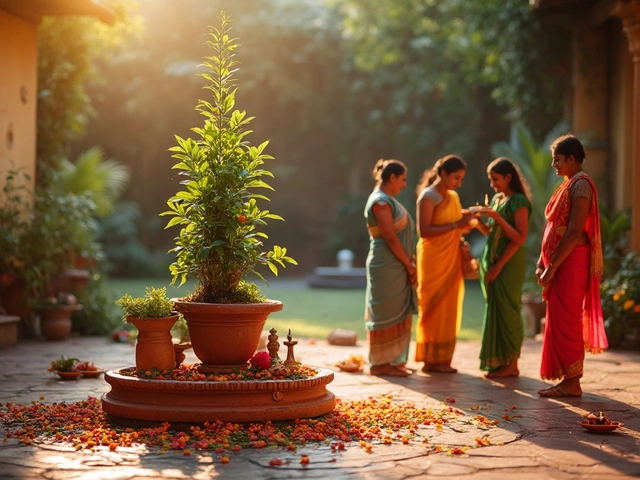
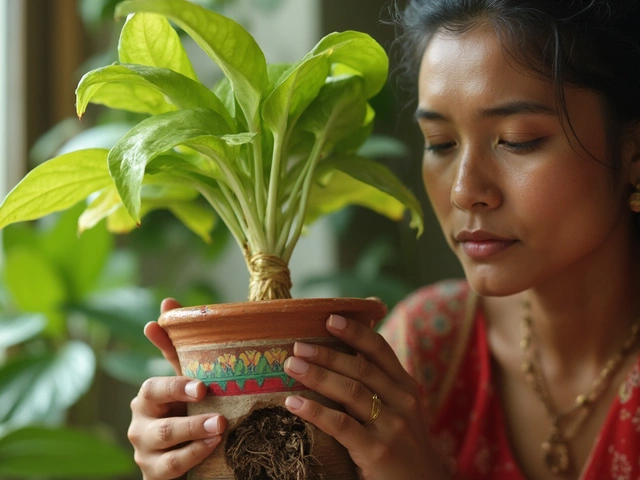
Does Hydrogen Peroxide Help Root Rot? The Real Story for Indoor Plants
By Alden Thorne May 2, 2025
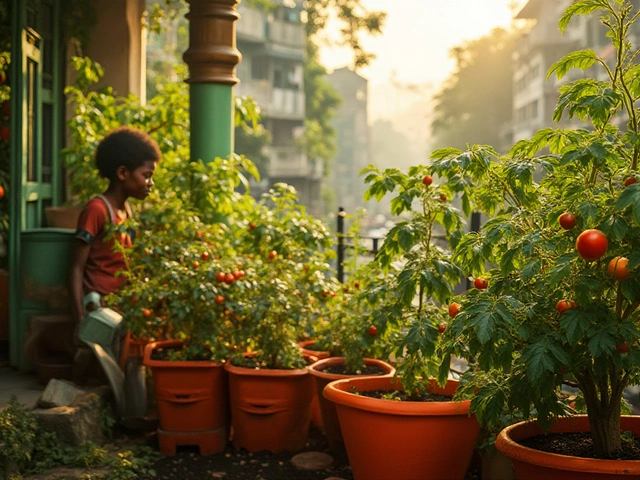
How to Successfully Grow Tomatoes on Your Balcony
By Alden Thorne Jan 16, 2025
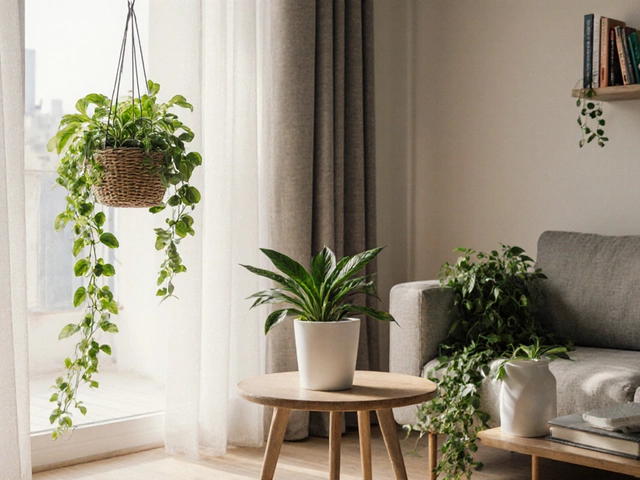
Top Easy Houseplants for Beginners - Low‑Maintenance Indoor Greens
By Alden Thorne Oct 7, 2025

